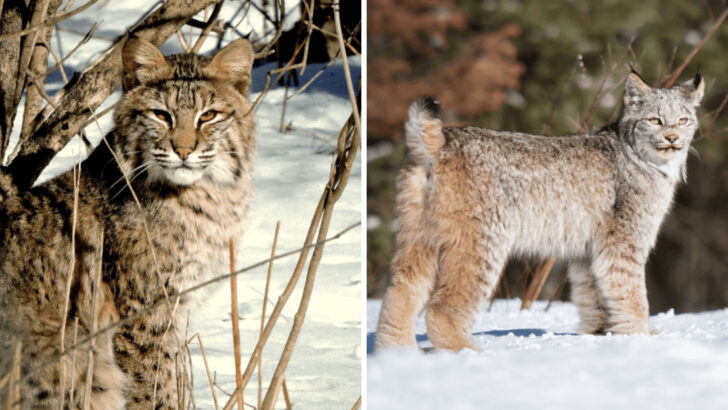One looks like it’s wearing snowshoes.
The other? Like it’s ready to brawl in a back alley.
Canada lynxes and bobcats may seem like cousins at a family reunion—but don’t be fooled. These two wildcats are living proof that a few inches of fur and attitude can change everything.
From their paw prints in the snow to the way they stalk prey in the shadows, lynxes and bobcats go about life in wildly different ways. One thrives in icy silence. The other punches through brush with raw grit.
Confusing them is easy. Telling them apart? Way more fun than you’d think.
Size and Build
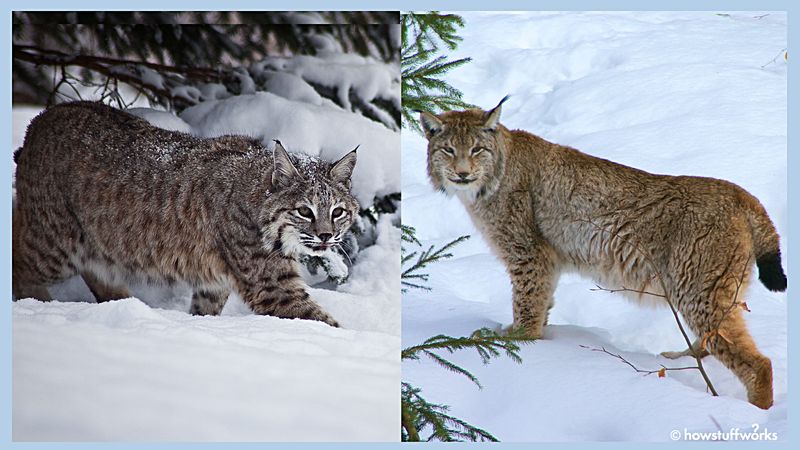
Canada Lynxes are noticeably larger than Bobcats, with longer legs and a more robust build. Their size gives them an imposing presence, especially when compared to the more compact and lean Bobcat. Lynxes often weigh between 18 to 30 pounds, whereas Bobcats typically range from 11 to 30 pounds. The added size of the Lynx is complemented by its thick fur, which adds to its bulk. Meanwhile, the Bobcat’s streamlined physique allows it to be more agile and versatile in various terrains. These differences in size and build reflect their adaptation to different environments.
Ear Tufts
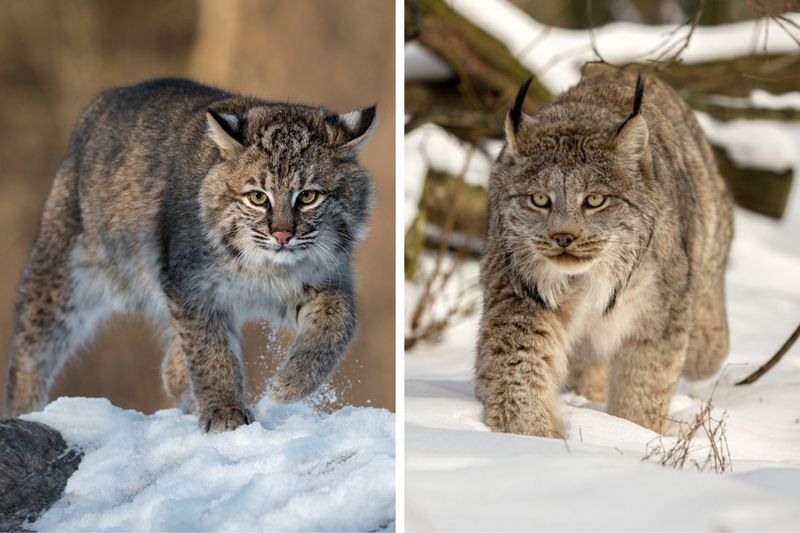
A striking feature of the Canada Lynx is its ear tufts, which are longer and more pronounced than those of the Bobcat. These tufts can extend up to 2 inches, giving the Lynx a distinctive silhouette. Bobcats, on the other hand, have shorter ear tufts, often less than an inch. The function of these tufts is not entirely known, but they may aid in communication or in enhancing their hearing. The visual difference is one of the easiest ways to distinguish between these two cats in the wild. The Lynx’s long tufts add a dramatic flair to its appearance.
Tail Appearance
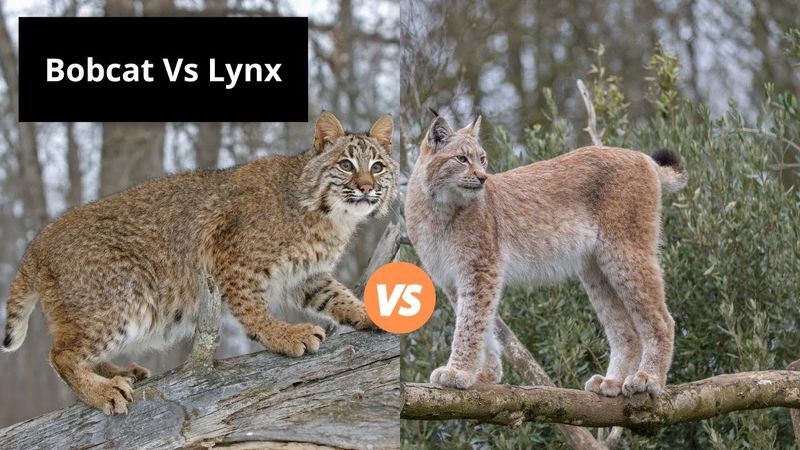
Another key difference between the Canada Lynx and the Bobcat is the appearance of their tails. The Lynx’s tail is short and stubby, ending with a uniformly black tip. This contrasts with the Bobcat’s tail, which is relatively longer and features a black and white banded pattern near the tip. The tail differences are not just aesthetic; they play roles in balance and communication. The Lynx’s tail is adapted to its cold environment, minimizing heat loss, while the Bobcat’s tail is more versatile for agile movements in varied terrains. These tails are a hallmark of each species’ identity.
Habitat Preferences
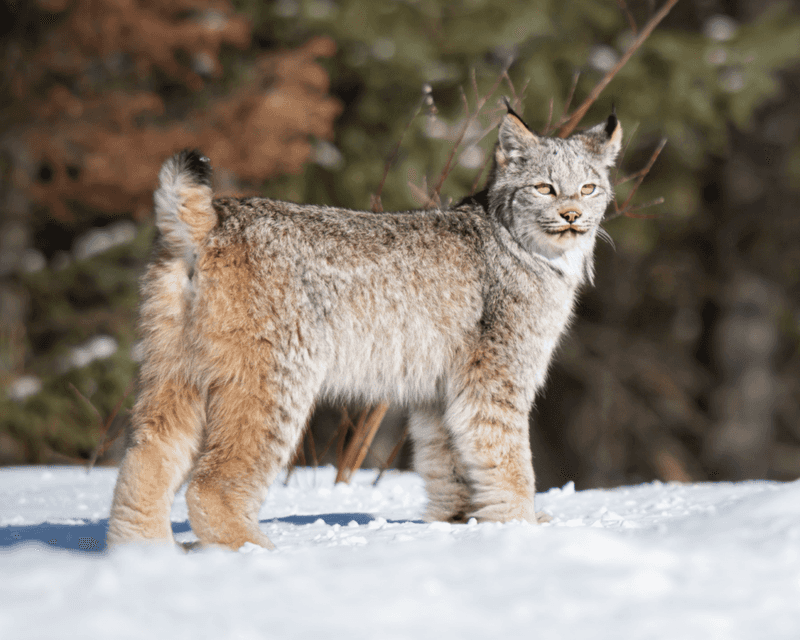
Canada Lynxes and Bobcats inhabit different types of environments, reflecting their adaptations to distinct ecosystems. Lynxes are primarily found in dense boreal forests where snow is abundant. Their large paws act like snowshoes, allowing them to traverse deep snow effectively. Bobcats, conversely, are more versatile and can thrive in various environments, from forests to semi-deserts. This adaptability makes them more widespread across North America. The habitat preferences of these cats showcase their evolutionary paths, with each finding niches that suit their physical abilities and hunting strategies. Their environments shape their survival and success.
Fur and Coat
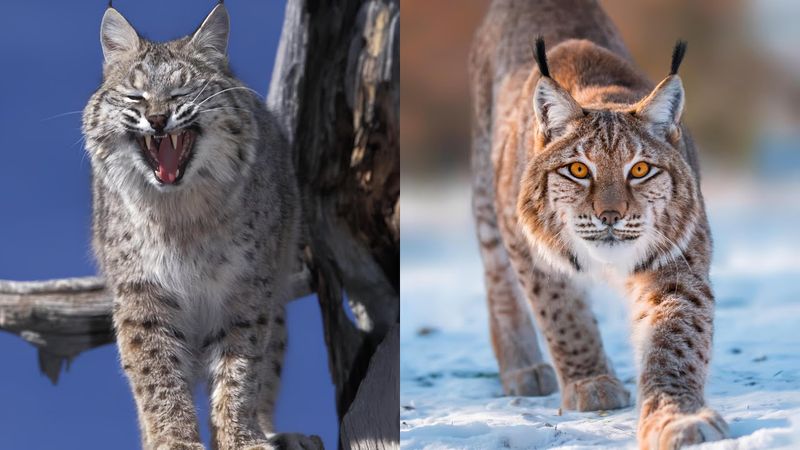
The fur of Canada Lynxes is thicker and denser compared to that of Bobcats, a necessary adaptation for the cold climates they inhabit. The Lynx’s coat is usually a uniform grey or brown, providing excellent camouflage in snowy environments. In contrast, Bobcats boast a more varied and spotted coat, which helps them blend into diverse landscapes ranging from forests to desert regions. These differences in fur not only reflect their habitats but also influence their hunting techniques. Lynxes rely on stealth in the snow, while Bobcats use their spots for camouflage in mixed terrains.
Hunting Techniques
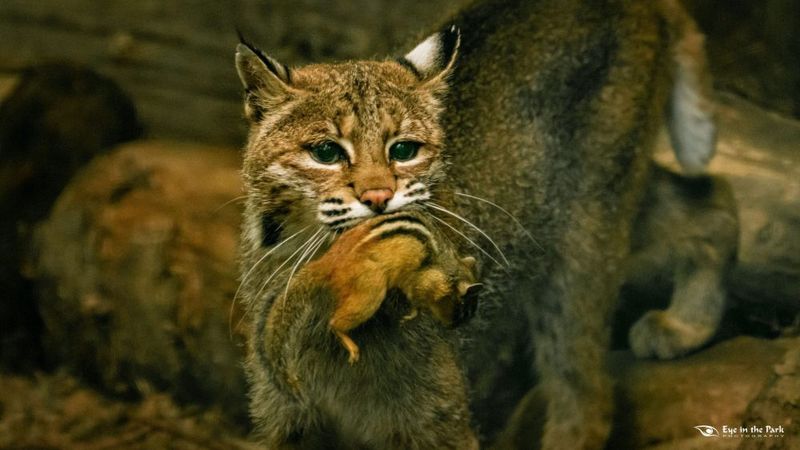
Canada Lynxes and Bobcats have developed distinct hunting techniques tailored to their environments. Lynxes are solitary hunters, often relying on stealth to catch prey, such as snowshoe hares. Their large, padded paws allow them to move quietly over snow. Bobcats, on the other hand, are more opportunistic, hunting a variety of prey from rabbits to birds. They are known for their patience, often stalking and pouncing on their prey with precision. These differences in hunting reflect their adaptability and roles in their respective ecosystems, showcasing their survival skills honed over millennia.
Behavioral Traits
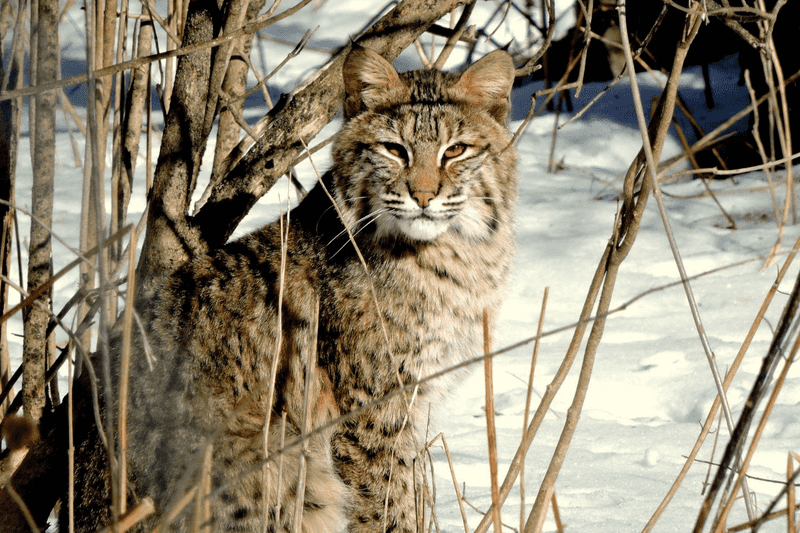
Behaviorally, Canada Lynxes are more solitary and elusive than Bobcats. Lynxes tend to avoid interactions, living alone except during mating season or when raising young. Bobcats, while also solitary, exhibit more playful and curious behaviors. They may be seen exploring or interacting with other animals, especially when young. This difference in behavior highlights their distinct evolutionary paths and social structures. Lynxes’ solitary nature aids in conserving energy in harsh climates, while Bobcats’ interactive traits reflect their adaptability to various environments. These behaviors enhance their survival and success in the wild.
Vocalizations
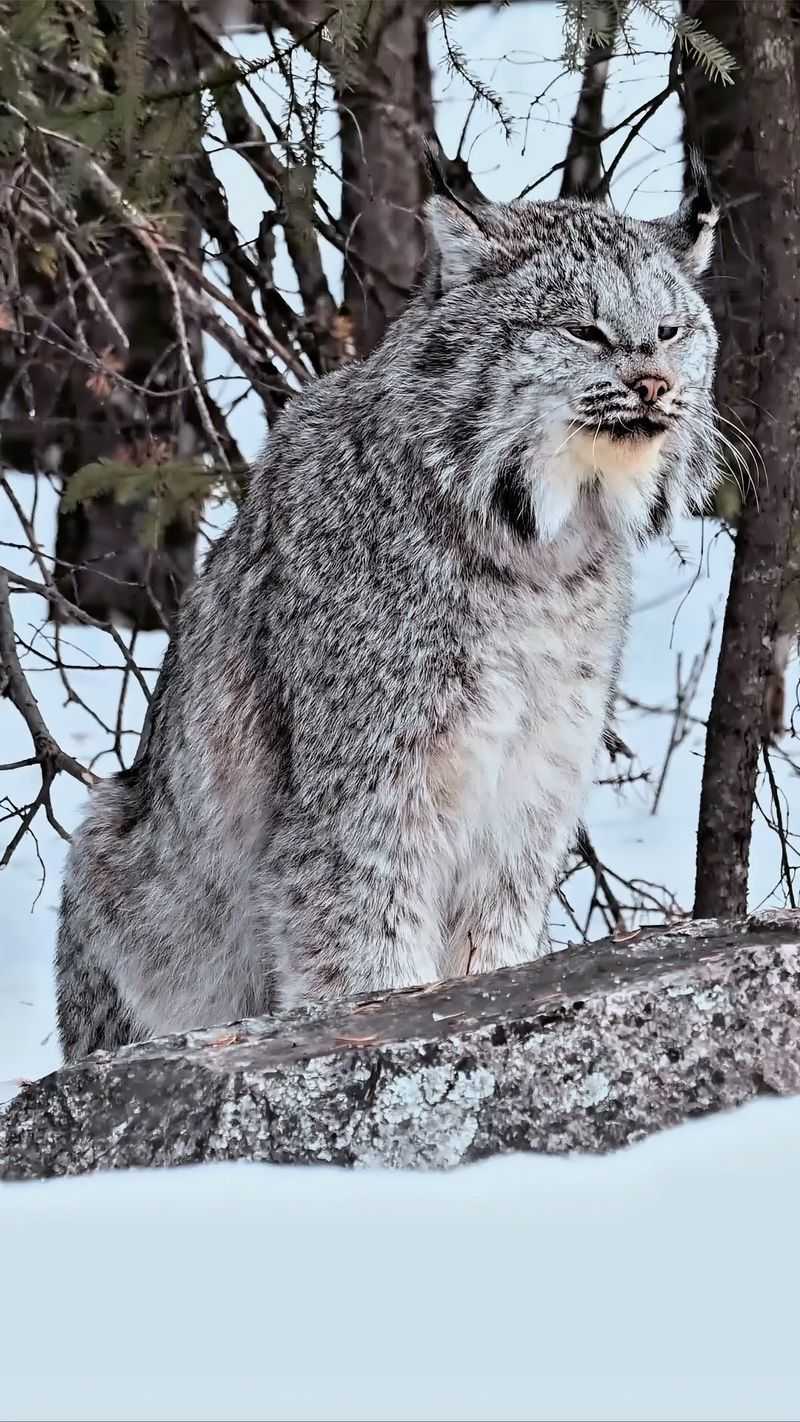
Canada Lynxes and Bobcats have different vocalizations that reflect their communication styles. Lynxes are known for their low growls and soft meows, often remaining silent to avoid detection. Their vocalizations are primarily used during mating season. Bobcats, in contrast, are more vocal, producing yowls, hisses, and screams. These sounds are used for communication with other Bobcats, particularly during territorial disputes or mating. The distinct vocal patterns of these cats illustrate their adaptation to their environments and social behaviors. While Lynxes rely on subtlety, Bobcats use sound to establish presence and territory.
Diet Variations
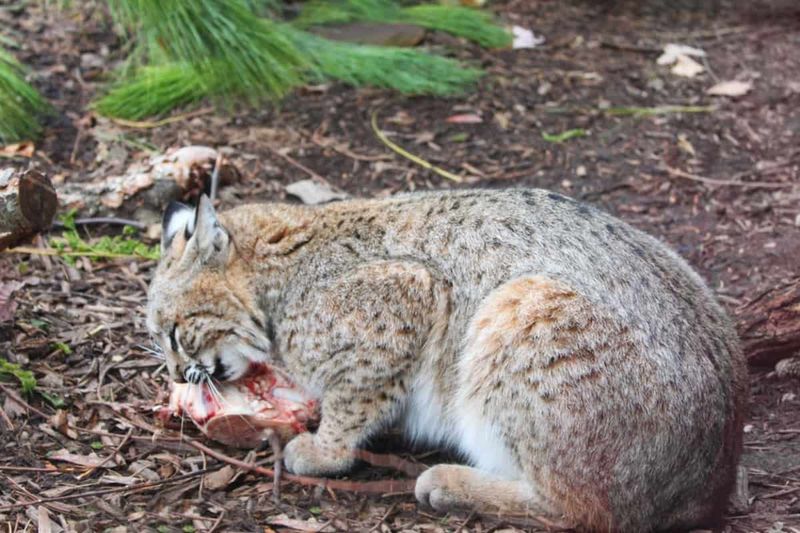
The diets of Canada Lynxes and Bobcats vary according to their habitats and available prey. Lynxes primarily feed on snowshoe hares, which constitute a significant portion of their diet. Their entire life cycle is closely linked to the hare population. Bobcats, however, have a more diverse diet, often hunting rabbits, birds, and even small deer. This dietary flexibility allows them to survive in numerous environments. The variance in their diets demonstrates their adaptability and evolution. While Lynxes specialize, making them vulnerable to prey fluctuations, Bobcats thrive on their ability to diversify.
Range and Distribution
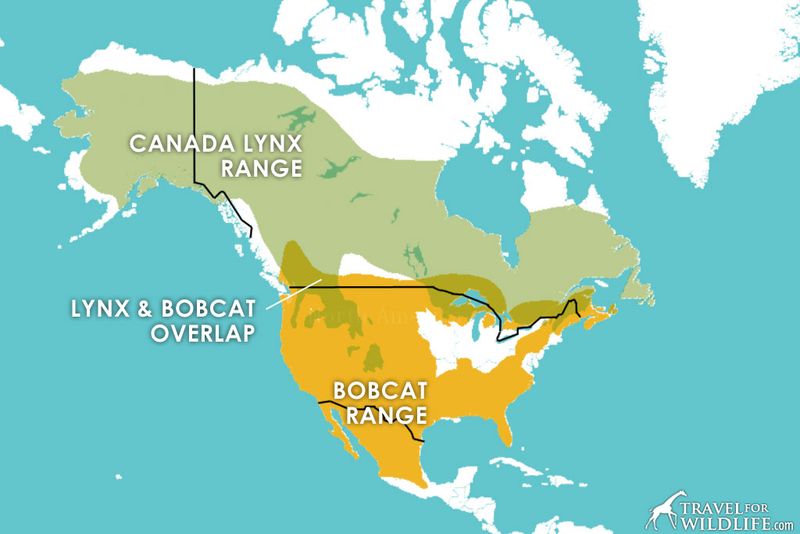
Canada Lynxes and Bobcats occupy different ranges across North America. Lynxes inhabit the northern forests, from Alaska through Canada to the northern United States. They prefer cold climates and dense forests. Bobcats, however, have a broader distribution, found throughout the continental United States, extending into southern Canada and Mexico. Their adaptability to diverse environments, from swamps to deserts, accounts for their widespread presence. The differences in range and distribution are a testament to each species’ adaptability and ecological niches. While the Lynx is specialized for cold environments, the Bobcat thrives in diverse habitats.
Reproductive Habits
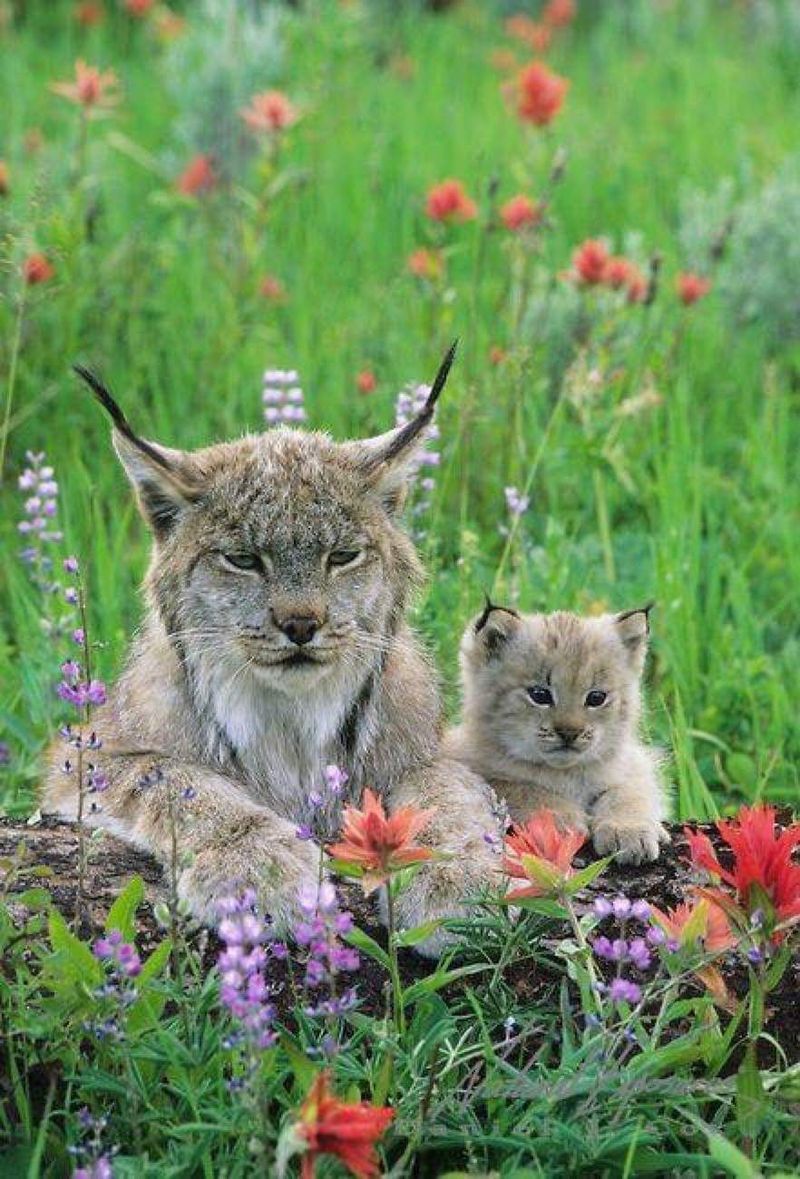
Reproductive habits of Canada Lynxes and Bobcats differ, reflecting their adaptation to their environments. Lynxes have a breeding season influenced by the snowshoe hare population, typically resulting in one litter per year. Bobcats, on the other hand, may have two litters annually, due to their varied diet and habitat. Lynx kittens are born in dens made in fallen trees or thick brush, while Bobcat dens are often found in rocky areas or hollow logs. These reproductive strategies highlight their ecological roles and survival tactics. The Lynx’s reproduction is closely tied to prey availability, while Bobcats leverage their diverse habitats.
Lifespan and Mortality
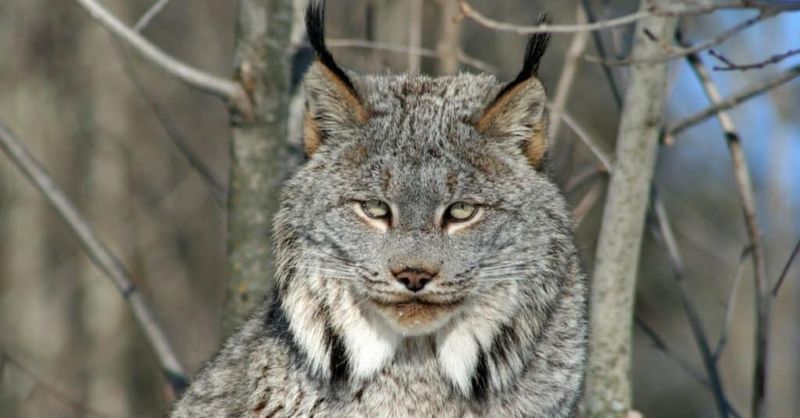
Lifespan and mortality rates of Canada Lynxes and Bobcats provide insight into their ecological adaptations. Lynxes in the wild typically live around 10-15 years, facing threats from predators and human activities. Bobcats have a similar lifespan, often reaching up to 12 years, though they may live longer in captivity. Mortality factors include disease, hunting, and environmental changes. These differences in lifespan and mortality highlight their survival strategies and adaptability. Lynxes face challenges from climate and prey availability, while Bobcats’ diverse habitats offer a buffer against similar threats. Each species’ lifecycle is a testament to their resilience.
Conservation Status
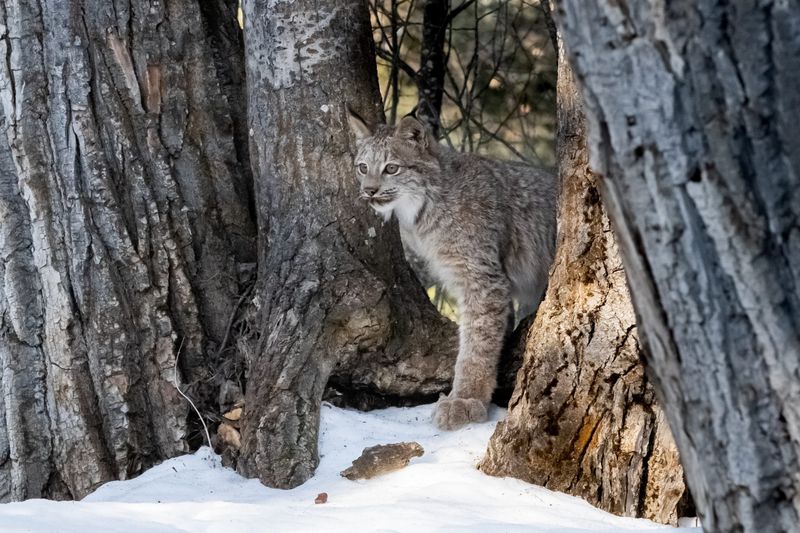
Canada Lynxes and Bobcats face varying conservation statuses, influenced by habitat and human impact. Lynxes are listed as a species of special concern in some regions due to habitat loss and declining prey populations. Conservation efforts focus on preserving their boreal forest habitats and ensuring sustainable prey populations. Bobcats enjoy a more stable status, with healthy populations across their range. However, they still face threats from hunting and habitat fragmentation. Understanding these conservation challenges is crucial for protecting these species. While Lynxes require focused conservation strategies, Bobcats benefit from broader habitat protection efforts.
Historical Significance
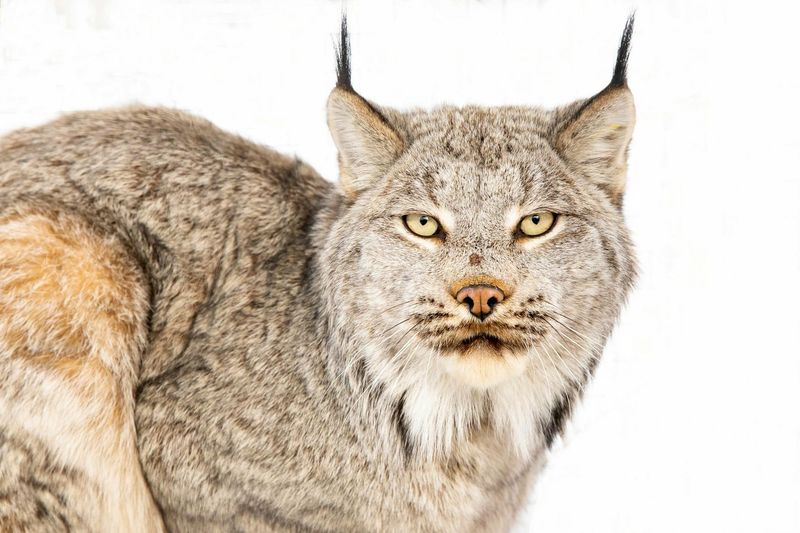
Historically, Canada Lynxes and Bobcats have held different significance across cultures. Lynxes appear in indigenous folklore as symbols of mystery and intuition, reflecting their elusive nature. Bobcats, meanwhile, are often depicted in early settler records and native stories as cunning creatures, admired for their adaptability. These historical perceptions influence their cultural roles and conservation efforts. Lynxes’ mysterious presence highlights their ecological importance, while Bobcats’ adaptability is celebrated in various cultural narratives. Understanding these historical contexts enriches our appreciation of these animals and underscores their place in North America’s natural heritage.
Human Interactions
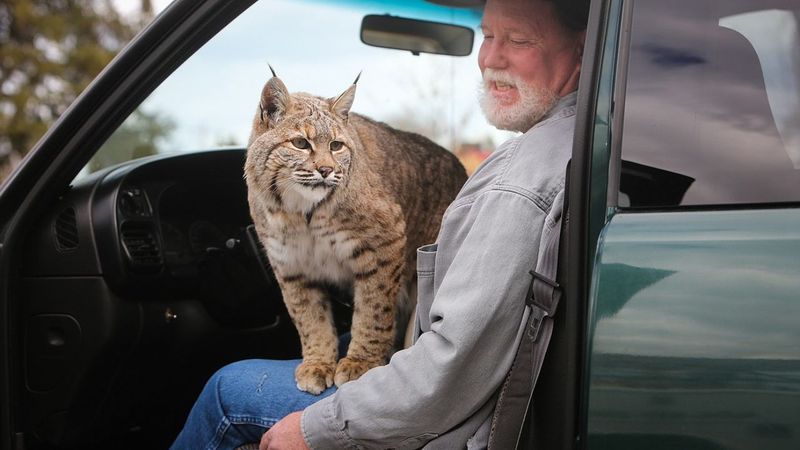
Human interactions with Canada Lynxes and Bobcats vary significantly. Lynxes, due to their remote habitats, have limited direct interaction with humans. They are often monitored in wildlife reserves where conservationists study their behaviors and ecology. Bobcats, however, frequently encounter humans, sometimes venturing into urban areas. This adaptability has led to both admiration and challenges, such as conflicts with pets and livestock. These interactions shape public perceptions and conservation policies. Understanding the balance between coexistence and conservation is key to ensuring the future of these wild cats in our landscapes.

